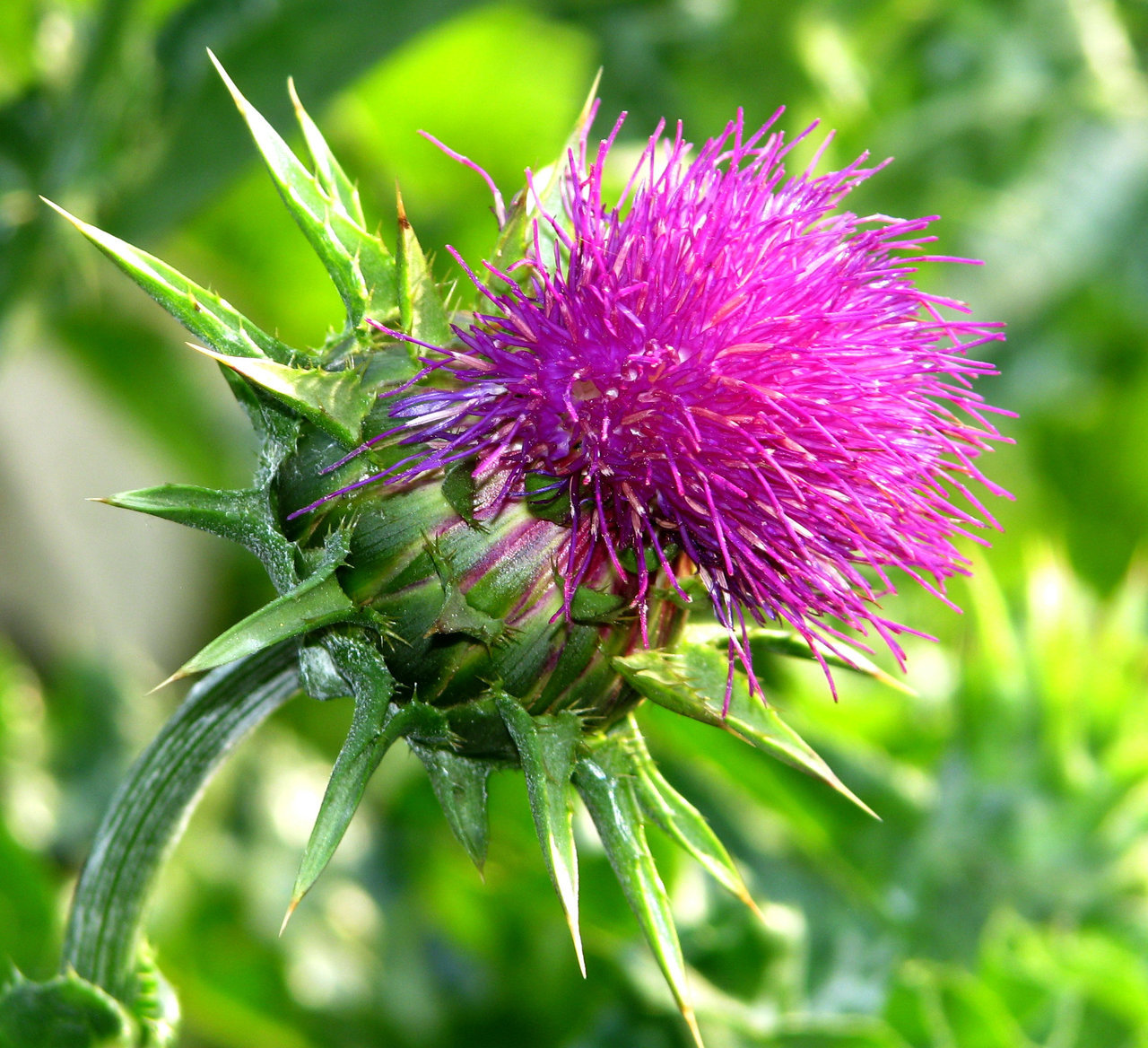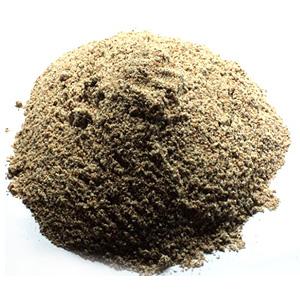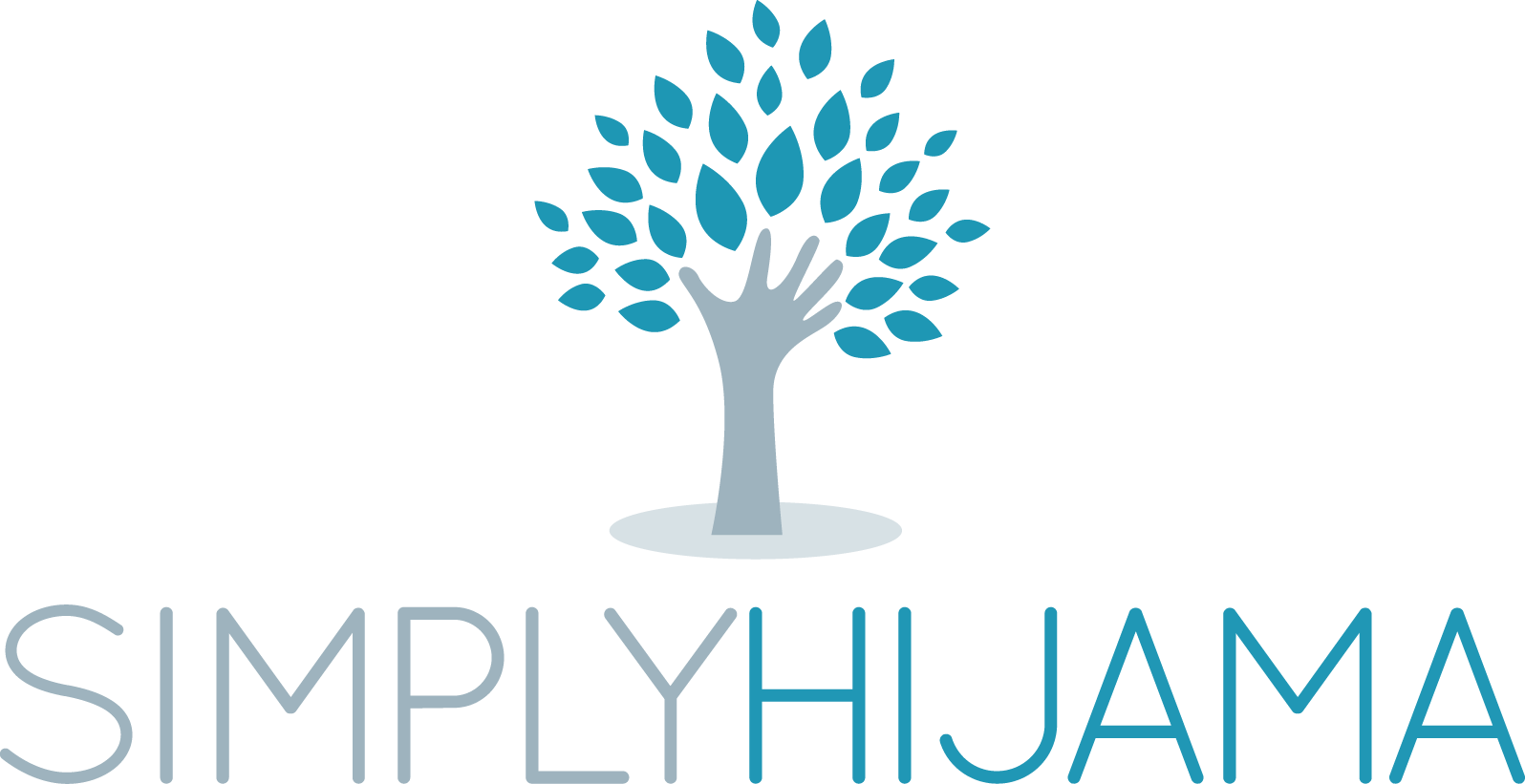Milk thistle is an herbal remedy derived from the milk thistle plant (which has the scientific name Silybum marianum). Milk thistle gets its name from the milky-white liquid that runs off of the plant’s leaves when they’re crushed. The actual leaves of the plant also have a spotted white pattern that makes them look as if they have been dipped in milk. Milk thistle has been used in traditional herbal medicine for a long time, with references dating back to the first century. In Roman times, Pliny the Elder wrote about the effective power of milk thistle. The Greek physician and botanist Dioscorides was the first to describe milk thistle’s healing properties back in the year 40 A.D. He mentioned milk thistle tea as a remedy for snakebites.

In the sixteenth century, John Gerard wrote in his ‘Anatomie of Plants’ that milk thistle could help with depression and emotional distress. Europeans continued to use milk thistle for this purpose. At that time, people consumed all parts of the plant, including the roots and the milk of the herb. Later, in the seventeenth century, physician and herbalist Nicolas Culpeper claimed that milk thistle can help the liver by unblocking it, when necessary, and could also help cure jaundice. In the 1800’s, people used milk thistle for additional ailments, including irregular menstruation, varicose veins, kidney, liver and spleen problems. Today, milk thistle is still an effective cure for these ailments.
Milk thistle is native to Europe, the Middle East, North Africa, and parts of the Mediterranean. However, it can be found around the world. Silybum marianum is a member of the aster family which includes the daisies and sunflowers, such as artichoke. Many gardeners consider it a weed due to the speed with which it grows. Milk thistle can grow to be ten feet high, and its stem has spines and thorns. The purple flowers can each contain up to 190 seeds, which have the most medicinal benefit as they contain silymarin, the active ingredient in milk thistle extract. Silymarin is composed of several other active compounds known as flavonolignans. The root, leaf and seed have medicinal uses, but the flavonolignans in the seed are its most widely used form today.
Milk Thistle Benefits
Milk thistle is best known for its positive effect on liver health, but studies are looking into other possible benefits too. However, always talk to your doctor before taking any supplements. Keep reading to learn some of the ways researchers think milk thistle may be able to help improve your health.
1. Liver Support
Milk thistle benefits by drawing toxins out of the body and protecting the liver from damage. Silymarin has been used in traditional medicine as a natural remedy for diseases of the liver because of its potent antioxidant activity.
It is effective at naturally reversing the harmful effects of alcohol consumption, pesticides in our food supply, heavy metals in our water supply, pollution in the air that we breathe and even poisons.
It’s regularly used as a complementary therapy by people who have liver damage due to conditions like alcoholic liver disease, non-alcoholic fatty liver disease, hepatitis and even liver cancer.
Studies have shown improvements in liver function in people with liver diseases who have taken a milk thistle supplement, suggesting it could help reduce liver inflammation and liver damage.
2. Anti-Ageing Properties
About 50-70% of the silymarin molecules present within milk thistle are the type called silybin, also known as silibinin. This antioxidant stimulates protein synthesis and changes the outside layer of healthy cells, keeping them protected from damage and mutation.
Silibinin inhibits toxins from dwelling in the body; helps with cell renewal; and counteracts the harmful effects of pollutants, chemicals and heavy metals that can cause free radical damage.
Thus, the herb may actually help slow the aging process. This applies to both the surface of your skin and your organs, as antioxidants can protect your body from chronic disease.
Its anti-inflammatory and antioxidant properties mean that it is possibly neuro-protective and could help prevent the decline in brain function you experience as you age. However, it’s unclear whether milk thistle is absorbed enough in people to allow adequate amounts to pass through the blood-brain barrier. It’s also unknown what doses would need to be prescribed for it to have a beneficial effect.
3. Cancer Prevention and Treatment
Silymarin is associated with decreasing the risk for cancer development by boosting the immune system, fighting DNA damage and reversing cancerous tumour growth.
In 2007 researchers at the University of Minnesota found that there is strong preclinical evidence for silymarin’s hepato-protective and anti-carcinogenic effects, including inhibition of cancer cell growth in human prostate, skin, breast, and cervical cells.
Some animal studies have shown that milk thistle could be useful for reducing the side effects of cancer treatments. It may make chemotherapy work more effectively against certain cancers and, in some circumstances, even destroy cancer cells.
The studies in humans are very limited and have yet to show a meaningful clinical effect in people.
4. Boost Breast Milk Production
Milk thistle is reported to boost breast milk production in lactating mothers. It’s thought to work by making more of the milk-producing hormone prolactin.
One randomised controlled study found that mothers taking 420 mg of silymarin for 63 days produced 64% more milk than those taking a placebo. More research is needed to confirm these results and the safety of milk thistle for breastfeeding mothers.
5. Acne Treatment
Due to its antioxidant and anti-inflammatory effects, milk thistle may be a useful supplement for people with acne.
Interestingly, one study found that people with acne who took 210 grams of silymarin per day for 8 weeks experienced a 53% decrease in acne lesions.
6. Others Benefits
Other possible health benefits include lowering high cholesterol, supporting weight loss, reducing insulin resistance, improving allergic asthma symptoms, improving cognitive function, and supporting bone health.
Milk Thistle for Health
The leaves and stalks of the Milk thistle were at one time used in salads, soups and pies, with the leaves surpassing the finest of cabbage. The heads were also eaten, in most cases they were boiled and treated like those of the Artichoke.
The seeds and leaves of the milk thistle plant can be consumed either in capsule, powder, tincture, extract or tea form. The seeds can actually be eaten completely raw, too, but usually people prefer to take a milk thistle extract or supplement in order to consume a higher dose and see bigger results.
Dosage Suggestions
The suggested dosage is a total of 420 mg per day. Each capsule should contain at least 70 percent silymarin. Carefully read any directions and dosages listed on the label of the specific brand that you buy. Dosages may vary. You can also drink up to six cups of milk thistle tea each day.

If a milk thistle extract were given that was standardised to 70% silymarin, then a usual dose would be 200 mg three times daily which would be delivering 420 mg of silymarin. When treating chronic liver disease, duration of use may be as short as two months up to several years and conceivably throughout the patient’s lifespan in cases of chronic hepatitis, cirrhosis, and or fibrosis. Oral dosing should be personalised to the patient, their condition, and the milk thistle product being used. Consider the following:
· Cirrhosis: Silymarin, 280 to 450 mg per day in two or three divided doses.
· Chronic hepatitis:Silipide or silipide equivalents, 160 to 480 mg per day or silymarin 420 mg per day, in three divided doses.
· Acute viral hepatitis:Silymarin, 420 mg daily in three divided doses.
· Drug/toxin-induced hepatotoxicity:Silymarin 280 to 420 mg daily in three divided doses; but up to 800 mg/day can be considered.
Precautions
Milk thistle is generally considered safe when taken by mouth. In fact, in studies where high doses were used for long periods, only about 1% of people experienced side effects. When reported, side effects for milk thistle are generally gut disturbances like diarrhoea, nausea or bloating.
Some people are advised to be cautious when taking milk thistle. These include:
· Pregnant women:There is no data on its safety in pregnant women, so they are usually advised to avoid this supplement.
· Those allergic to the plant:Milk thistle may cause an allergic reaction in people who are allergic to the Asteraceae/Compositae family of plants, or to daisies, artichokes, common thistle or kiwi. If an anaphylaxis reaction should occur with any of the above plants, then milk thistle should be avoided altogether.
· People with diabetes:The blood sugar-lowering effects of milk thistle may put people with diabetes at risk of low blood sugar. Milk thistle can lower fasting glucose and haemoglobin A1c.
· Those with certain conditions:Milk thistle can have estrogenic effects, which may worsen hormone-sensitive conditions, including some types of breast cancer.
· Those taking certain medications:Milk thistle should be used with caution in patients taking medications metabolised by the cytochrome P450 system and in patients who are taking hypoglycemic agents.
To Sum Up…
Milk thistle has been used medicinally all around the world. Many of civilization’s earliest botanists and pharmacists in ancient Greece and Rome used milk thistle to aid in bile-related problems; later in Europe it was used to treat everything ranging from depression to venomous bites; in Traditional Chinese Medicine it is said to clear heat and remove toxicity.
Milk thistle is most well-known for being a natural liver supporter and detoxifier. It could decrease, or even reverse damage to the liver that has been caused by prescription medications, alcohol use, antibiotics, pollution and heavy metals. Promising research is showing that it could treat many of the major health problems we have today, such as diabetes, heart disease, osteoporosis, cancer and even slow down the ageing process. It’s still early days yet and more research is warranted to discover its full potential.
Source
http://www.herballegacy.com/McCorrie_History.html
http://www.milkthistleresource.com/milk-thistle-history/
https://www.gaiaherbs.com/uploads/A_Research_Review_of_Milk_Thistle-1370440497.pdf
https://www.healthline.com/nutrition/milk-thistle-benefits
https://www.healthline.com/health/milk-thistle-benefits#how-to-take-it
https://draxe.com/milk-thistle-benefits/
http://www.pkids.org/files/milkthistle.pdf
https://www.medicalnewstoday.com/articles/320362.php
